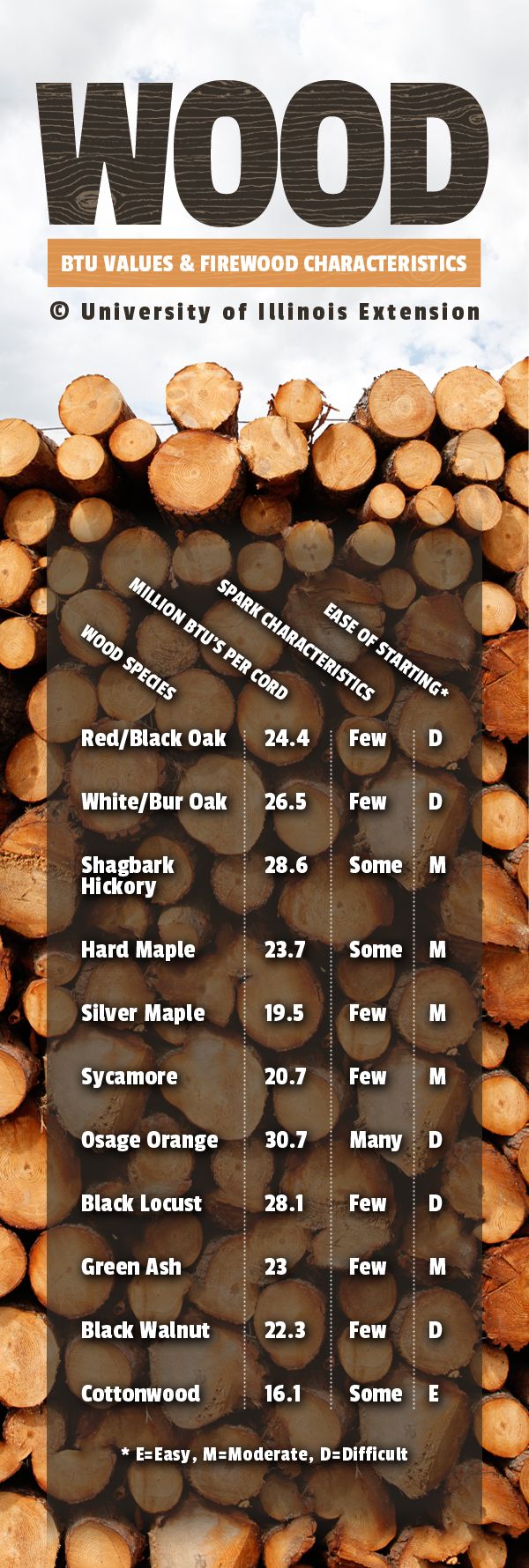What makes a good firewood?
Well… a couple things actually. The University of Illinois boiled down the major components of buying firewood to the BTUs (British thermal units) produced, spark characteristics, and ease of splitting.
BTU relates directly to heat, the more BTUs a piece of wood produces, the more heat you have in your home. The problem is that BTU output is directly related to wood density, so the wood species that produce the highest BTU output is also the hardest to split among the species’ tested.
So even though Osage Orange wood may appear at first to be an obvious front-runner for firewood of the year because it produces A LOT of heat, if you are splitting it yourself it may become a splitting headache to take care of.
Additionally, wood that is more dense than normal may also spark more than normal. This may not seem like a bad trade-off, but those sparks pose an added danger to your home if the fire is not properly maintained or not carefully monitored.
Seasoning
After you’ve chosen a wood (with the handy chart provided by The University of Illinois) be sure to season your wood properly and measure the moisture content with a moisture meter. Moisture content of the wood should be below 20 percent. This usually takes at least six to nine months of drying time after cutting fresh wood to lower moisture content to this level. Burning wood with higher moisture contents produces more smoke and less heat. The smoke produced from burning “green” wood also adds to creosote buildup in chimneys, creating a potential fire hazard.
And if you have any questions about what firewood may be best for you, call Black Goose Chimney Sweep and we are happy to give you our advice.

